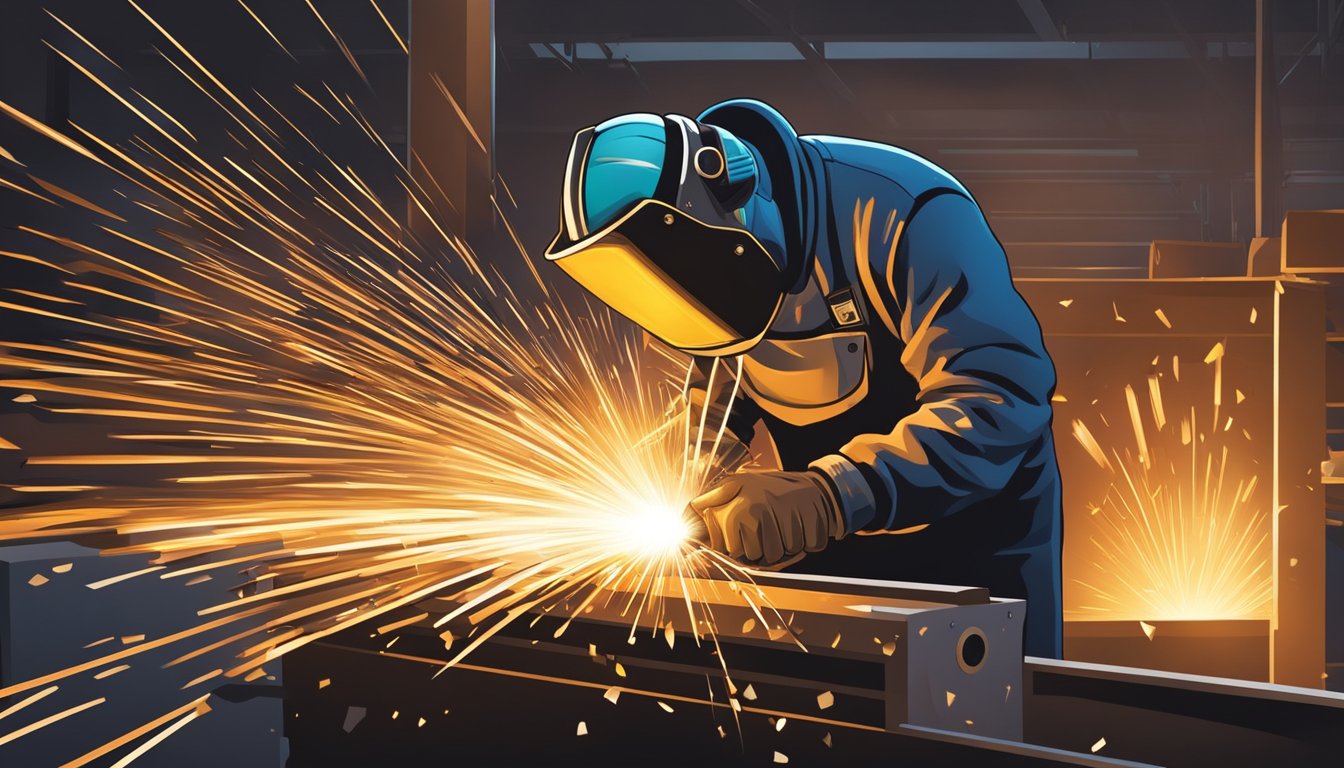Creating a Welding WPS: Step-by-Step Recommendations for Professionals
Creating a Welding WPS: Step-by-Step Recommendations for Professionals
Blog Article
The Ultimate Guide to Welding WPS Procedures: A Comprehensive Introduction for Welders
In the intricate world of welding, Welding Procedure Requirements (WPS) offer as the foundation of guaranteeing high quality, uniformity, and security in welding procedures. Recognizing the subtleties of developing, implementing, and keeping track of WPS procedures is crucial for welders seeking to boost their craft and meet market criteria. As we dive right into the various parts of a WPS and explore the intricacies of qualification and qualification, we will certainly uncover the important duty these procedures play in the world of welding. Allow's get started on a trip to unravel the intricacies and relevance of WPS treatments in welding techniques.
Significance of WPS Procedures
Understanding the significance of Welding Procedure Specifications (WPS) procedures is crucial for making certain the top quality and integrity of bonded frameworks. WPS treatments function as a roadmap for welders, laying out the required steps, specifications, and materials called for to attain a sound weld. By sticking to WPS guidelines, welders can ensure uniformity in their work, bring about reliable and structurally audio welds.
One of the main reasons WPS treatments are vital is their role in preserving weld quality and honesty. Complying with the defined welding specifications and strategies described in the WPS aids prevent flaws such as porosity, breaking, or insufficient fusion, which can endanger the toughness and sturdiness of the weld. Additionally, WPS treatments are crucial for making sure conformity with market criteria and codes. By complying with well-known WPS guidelines, welders can show that their work fulfills the necessary demands for safety and security and top quality, providing assurance to customers, examiners, and regulative bodies. Basically, the value of WPS treatments can not be overstated, as they are essential to attaining consistent, top notch welds that meet market criteria and specifications.

Components of a WPS
A Welding Treatment Requirements (WPS) typically comprises crucial elements that information the certain requirements for carrying out a weld, guaranteeing consistency and quality in the welding procedure. The crucial components of a WPS consist of essential variables such as base steels, filler metals, preheat and interpass temperature levels, welding procedures, protecting gases, welding settings, and post-weld heat therapy needs.
Base metals describe the materials being signed up with, while filler steels are utilized to load the space in between the base steels during welding. Preheat and interpass temperatures are essential for controlling the warm input and preventing issues like splitting or distortion. The welding process details the specific strategy to be used, whether it's gas metal arc welding (GMAW), secured steel arc welding (SMAW), or an additional technique. Securing gases secure the weld swimming pool from climatic contamination. Welding placements define the alignments in which welding can be performed. Post-weld warm therapy may be required to soothe tensions and enhance the weld's buildings. A thorough understanding of these components is critical for producing a detailed and effective WPS.

Qualification and Accreditation
Having developed the necessary elements of a Welding Procedure Spec (WPS), the emphasis now moves in the direction of the critical aspects of certification and accreditation in welding methods.

Certification, on the other hand, is the formal recognition of a welder's credentials by a relevant qualification body or company. Welding certifications are usually based upon the specific welding processes, products, and positions a welder is qualified to function with. Holding a valid welding certification demonstrates that a welder satisfies sector standards and is competent to do welding tasks to the needed specifications.
Developing a WPS
To develop a Welding Procedure Specification (WPS) that meets sector criteria, mindful factor to consider of welding procedures, materials, and operational criteria is necessary. The initial action in producing a WPS is to determine the welding process to be made use of, such as gas metal arc welding (GMAW) or secured steel arc welding (SMAW)

Carrying Out and Keeping Track Of WPS
Upon completing the extensive Welding Procedure Specification (WPS) that thoroughly information welding processes, products, functional parameters, and top quality assurance procedures, the emphasis shifts to effectively executing and checking the established procedures. Execution includes making certain that all welders included in the project are acquainted with the WPS and follow it meticulously during the welding procedure. Effective execution and surveillance of the WPS are important for ensuring the honesty, toughness, and safety of the bonded joints, ultimately adding to the general success of the welding task.
Conclusion
Finally, understanding and complying with Welding Procedure Requirements (WPS) is essential for welders to ensure top quality, consistency, and safety and security in their job. By knowing the elements of a WPS, getting proper credentials and accreditations, developing detailed procedures, and carrying out and monitoring them properly, welders can boost their skills and proficiency in welding methods. a knockout post Abiding by WPS treatments is important for creating top notch welds and conference industry requirements.
In the complex world of welding, Welding Procedure Specifications (WPS) serve as the foundation of making sure top quality, uniformity, and top article safety and security in welding operations. The welding process outlines the specific technique to be used, whether it's gas metal arc welding (GMAW), shielded metal arc welding (SMAW), or an additional technique.To establish a Welding Procedure Spec (WPS) that satisfies industry requirements, cautious consideration of welding processes, materials, and operational specifications is important. The first step in producing a WPS is to determine the welding procedure to be used, such as gas metal arc welding (GMAW) or secured steel arc welding (SMAW)Upon settling the thorough Welding Treatment Spec (WPS) that meticulously information welding procedures, products, operational parameters, and quality guarantee actions, the focus changes to effectively applying and monitoring the well established procedures.
Report this page